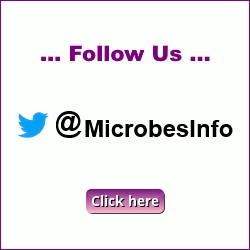A nonprofit plasmid repository archiving and distributing high quality plasmids.
Links for Genetic Databases:
-
https://www.addgene.org/
-
Conducting basic research in the field of bioinformatics. Based at the Technical University of Denmark.
http://www.cbs.dtu.dk/ -
Codon Usage Database is an extended WWW version of CUTG (Codon Usage Tabulated from GenBank). The frequency of codon use in each organism is made searchable through this World Wide Web site.
http://www.kazusa.or.jp/codon/ -
The DDBJ compiled the International Nucelotide Sequence Database entries that had been submitted by microbial genome project teams worldwide into databases specific to the species.
http://www.ddbj.nig.ac.jp/ -
A scientific database for the bacterium Escherichia coli K-12 MG1655.
http://www.ecocyc.org/ -
EcoGene is a collection of information about the genes, proteins, and intergenic regions of the E. coli K-12 genome and proteome accumulated during years of sequence analysis and literature surveys by Kenn Rudd and his collaborators
http://www.ecogene.org/ -
By Dr. John W. Kimball.
http://users.rcn.com/jkimball.ma.ultranet/BiologyPages/A/Avery.html -
A Japanese network of database and computational services for genome research and related research areas in biomedical sciences, operated by the Kyoto University Bioinformatics Center.
http://www.genome.jp/ -
GOLD: Genomes Online database, is a World Wide Web resource for comprehensive access to information regarding complete and ongoing genome projects around the world.
https://gold.jgi-psf.org/ -
Containing data on HIV genetic sequences, immunological epitopes, drug resistance-associated mutations, and vaccine trials. The website also gives access to a large number of tools that can be used to analyze these data.
http://www.hiv.lanl.gov/content/index -
This database provides a list of insertion sequences isolated from eubacteria and archae. It is organised into individual files containing their general features (name, size, origin, family.....) as well as their DNA and potential protein sequences.
https://www-is.biotoul.fr/ -
Kyoto Encyclopedia of Genes and Genomes (KEGG) is a database resource for understanding high-level functions and utilities of the biological system, such as the cell, the organism and the ecosystem, from molecular-level information, especially large-scale molecular datasets generated by genome sequencing and other high-throughput experimental technologies.
http://www.genome.jp/kegg/ -
MLST is a nucleotide sequence based approach for the unambiguous characterisation of isolates of bacteria and other organisms via the internet.
http://www.mlst.net/ -
A comprehensive database containing published rRNA-targeted oligonucleotide probe sequences, DNA microarray layouts and associated information.
http://www.microbial-ecology.net/probebase/ -
Hyperlinks to systematic analysis projects, resources, laboratories, and departments at Stanford University.
http://genome-www.stanford.edu/ -
These specialized databases are an expansion of the human papillomavirus project funded by the National Institute of Allergy and Infectious Diseases (NIAID), within the National Institutes of Health, Bethesda Maryland.
http://stdgen.northwestern.edu/ -
A resource for updated annotations and comparative genomic analyses. This site facilitates the easy comparison of multiple genome annotations arising from annotation or sequence-based searches, and couples this with improved methods for ortholog identification and contextual visualization.
http://www.burkholderia.com/ -
This group collaborates with an international panel of expert Burkholderia researchers to provide high quality updates to genomes annotation and make cutting edge genome analysis data available.
http://www.burkholderia.com/ -
This collection offers you all information regarding the entire E.coli K12 chromosome and is searchable in different ways: by a gen/sequence map, scrolling different tables or just by search for a keyword.
http://www.uni-giessen.de/ecoli/ECDC/ecdc.htm -
Center for Biological Sequence Analysis conducting basic research in the field of bioinformatics. Based at the Technical University of Denmark.
http://www.cbs.dtu.dk/services/GenomeAtlas/ -
The HCV database group strives to present HCV-associated, hand-annotated genetic data in a userfriendly way, by providing access to the central database via web-accessible search interfaces and supplying a number of analysis tools.
http://hcv.lanl.gov/ -
Providing a resource for the influenza virus research community that will facilitate an understanding of the influenza virus and how it interacts with the host organism, leading to new treatments and preventive actions. This resource will contain avian and non-human mammalian influenza surveillance data, human clinical data associated with virus extracts, phenotypic characteristics of viruses isolated from extracts, and all genomic and proteomic data available in public repositories for influenza viruses.
http://www.fludb.org/ -
A searchable database documenting variation in ribosomal RNA operons (rrn) in Bacteria and Archaea.
http://rrndb.umms.med.umich.edu/ -
Collecting virus-specific oligonucleotides for virus detection from published literature.
http://viroligo.okstate.edu/ -
Focusing on large DNA viruses. Providing databases of viral genomic information, providing easy access to the genes, gene families, and genomes of the different virus families, rally the research community to provide expert curation of these viral genomes, and collaborate with researchers to help on specific bioinformatics problems.
https://4virology.net/


